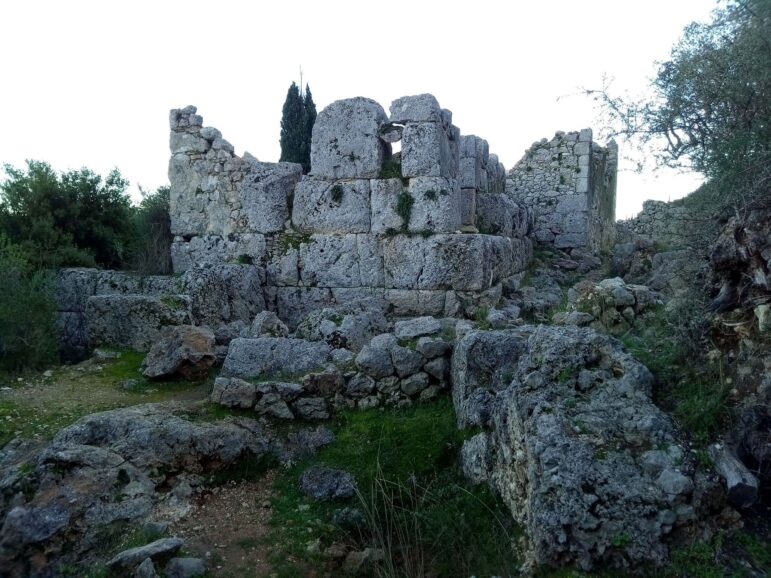
ITHACA, Greece – The heroes of the Homeric poems all carry their homelands with them. Agamemnon, the king who departed from Mycenae and was murdered upon his return; his brother Menelaus led his armies across the sea to Troy to bring his wife Helen back to Sparta. But no hero’s relationship with his home is more poignant than that of Odysseus, whose quest to come home to Ithaca, to his wife and child, makes up the main theme of Homer’s Odyssey.

The “School of Homer,” theorized to be the site of the Odysseion, Ithaca, Greece [Greek Ministry of Culture and Sports]
On the real island of Ithaca, there is a place long nicknamed “the School of Homer,” Agios Athanasios. Archeologists with the University of Ioannina have examined the site and determined that, based on several finds on Ithaca and references from elsewhere in the ancient Greek world, Agios Athanasios was likely the site of a hero-shrine to Odysseus, the Odysseion, which was likely the center of an Odysseus cult that lasted into Roman times.
“Our recent research is based on a re-examination of vast quantities of finds from our excavations,” Yannos Lolos, a lead archaeologist from University of Ioannina, told Artnet News. “We have found new and strong inscriptional evidence that identifies the monumental complex as a public sanctuary for the worship of Odysseus in Hellenistic and early Roman times.”
As reported by Greek City Times, the “School of Homer” contains natural springs and two terraces with structures built throughout the Classical era. There is evidence of human activity dating back to the Neolithic period, and a tower from the 3rd century B.C.E. During the period traditionally ascribed to the Odyssey – the 13th or 14th centuries B.C.E. – the site was likely part of a network of seven or eight urban locations in northern Ithaca.

Tile fragment inscribed with the name of Odysseus [Greek Ministry of Culture and Sport]
The bulk of discoveries at the site are from the Hellenistic and Roman periods, going up to about the 2nd century C.E. It’s these artifacts that provide some of the most compelling evidence for the Odysseion. There are stamped roof tiles that indicate religious use in the area, and two of the tiles include Odysseus’s name. For the linguistically inclined, one of the tiles is dedicated “to Odysseus,” suggesting it was created in his honor, and another is in the genitive case – “of Odysseus” – indicating the area belonged to hero. These roof tiles were likely supplied by pilgrims in the late Hellenistic period.
Another artifact that supports the identification of Agios Athanasios as the Odysseion is a Roman-era bronze bust of Odysseus. The bust has features similar to bronze Ithacan coins dated to the 3rd and 4th centuries B.C.E.

Bronze bust identified as Odysseus [Greek Ministry of Culture and Sport]
According to Greek City Times, there were references to an Odysseus cult on Ithaca found elsewhere in the Hellenistic world, such as a reference to the shrine and to athletic games held in the hero’s honor, the Odysseia, found in Asia Minor dating to 207 B.C.E.
The items related to Odysseus are not the only finds at the site. Archeologists have identified many other items, including clay tributes, gold and bronze jewelry, and more than 100 coins from various cities spanning more than 500 years that suggests a wide range of pilgrims visited the School of Homer in the Hellenistic and Roman periods.
The Wild Hunt is not responsible for links to external content.
To join a conversation on this post:
Visit our The Wild Hunt subreddit! Point your favorite browser to https://www.reddit.com/r/The_Wild_Hunt_News/, then click “JOIN”. Make sure to click the bell, too, to be notified of new articles posted to our subreddit.